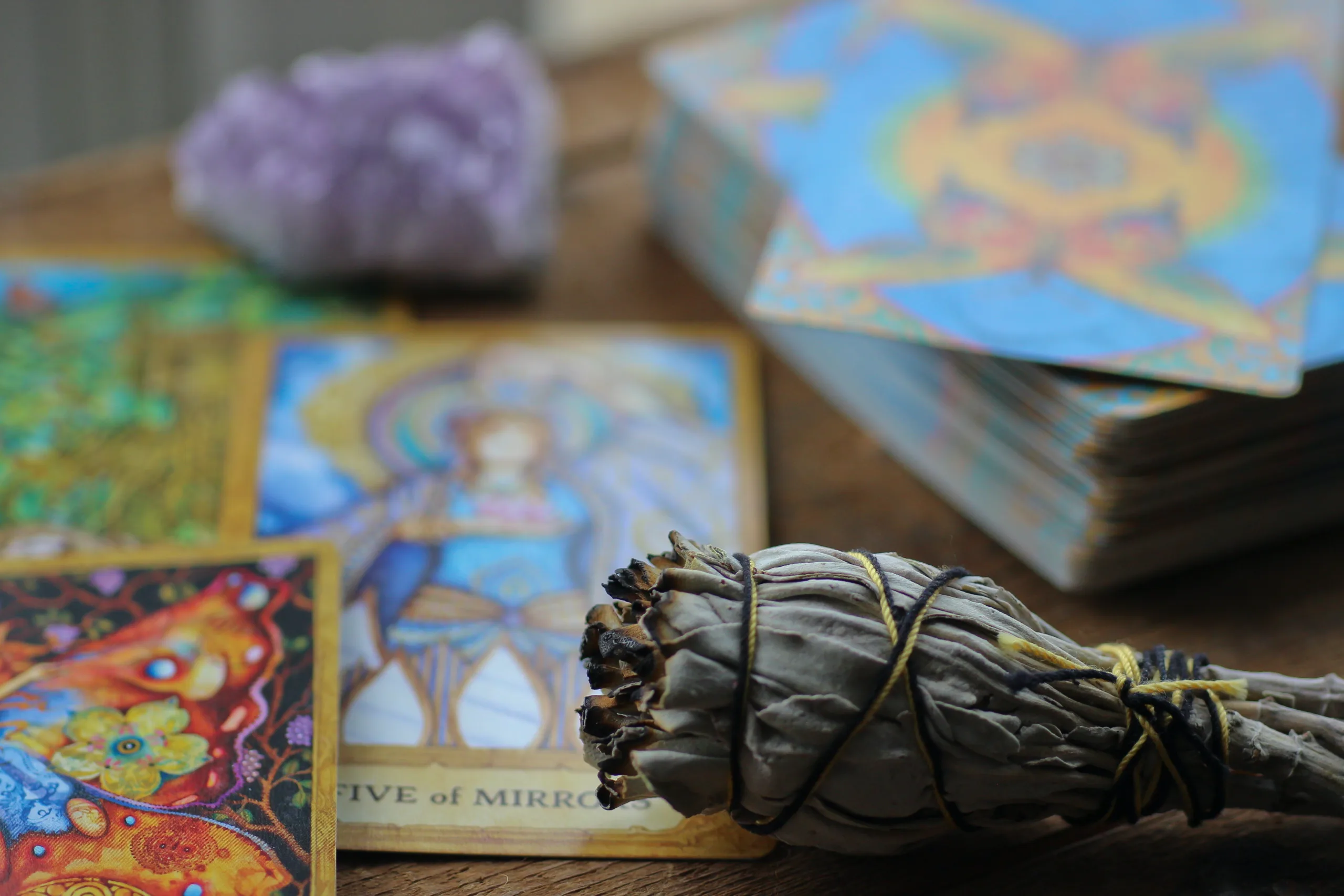Introduction to Tarot Cards
The mystical world of tarot has been a topic of fascination for centuries, beginning in the 15th century in various parts of Europe. Today we take a deep dive into "How to use tarot cards on yourself?" and delve into the power these symbolic images hold.
 Image by Kayla Maurais. Source: Unsplash.
Image by Kayla Maurais. Source: Unsplash.
Brief History of Tarot Cards
Originally, tarot cards were used for playing games in Italy, but in the late 18th century, they began to be utilized by mystics and psychics for divination. The deck includes picture cards that carry deeper meanings, symbols, and archetypes across various cultures and philosophies.
Purpose and Significance of Tarot Cards
Tarot readings aren’t about predicting the future or telling fortunes. They’re tools for introspection, enlightenment, and personal growth. The significance lies not in the cards themselves but in the symbolism and lessons they represent.
Misconceptions Surrounding Tarot Card Reading
Common misconceptions about tarot cards incorporate ideas like evil forces or that these cards could predict one’s impending doom. However, a more balanced perspective is to view them as tools that can help illuminate your path and guide you toward better understanding of yourself.
Understanding the Basics of Tarot Cards
To delve further into how to use tarot cards on yourself, understanding the basic structure of a tarot deck is crucial.
Definition and Types of Tarot Decks
A standard tarot deck comprises 78 cards divided into two sections: Major Arcana and Minor Arcana. Although decks vary based on artwork and theme, most traditional decks follow this structure.
The Major and Minor Arcana Explained
The Major Arcana includes 22 singular cards representing life’s karmic and spiritual lessons. The Minor Arcana is made up of 56 cards that reflect the trials and tribulations experienced on a daily basis.
The Four Suits of the Minor Arcana
The Minor Arcana has four suits: Cups (emotions/relationships), Pentacles (material aspects/finances), Swords (thoughts/beliefs), and Wands (action/motivation). Each suit has ten numbered cards and four court cards.
Preparing for a Personal Tarot Card Reading
Before starting a self-reading session, it’s important to prepare yourself both physically and mentally.
Choosing the Right Deck for You
Choose a deck that resonates with you at a personal level. The artwork, language, and symbolism should inspire and feel personal to your journey.
Setting the Ideal Environment for Reading
Choose a peaceful, quiet, and comfortable space for your reading. You could light candles or incense to enhance the ambiance.
Conducting a Pre-Reading Meditation
Before drawing cards, calm your mind through meditation. Focus on the questions you have in mind or what guidance you seek.
How to Conduct a Self-Reading With Tarot Cards
Conducting a self-reading isn’t just about choosing random cards but involves setting a clear intention, choosing an effective tarot spread, and interpreting the symbolic imagery of your spread.
Selecting your Spread
Depending on your question or issue at hand, select an appropriate spread. Simple spreads can involve one or three cards, while more complex questions may need a Celtic cross spread of ten cards.
Shuffling and Drawing the Cards
Shuffle the cards while keeping your question in mind, then draw cards from anywhere in the deck and lay them in your chosen spread layout.
Interpreting and Journaling Your Spread
Interpret each card’s meaning based on its position in the spread and overall context. Journaling about the meanings can help you keep track of insights and progress over time.
Troubleshooting Common difficulties in Personal tarot card reading
As with every steep learning curve, challenges are to be expected when conducting personal tarot readings.
Dealing with Unclear or Confusing Readings
If a reading seems unclear, try simplifying your question or using a simpler spread. Remember that the tarot reflects your current energy.
Frequently Asked Questions (FAQs)
- What are tarot cards typically used for?
- Are there any risks associated with tarot card reading?
- Can tarot predictions be wrong?
Conclusion
Understanding the outcomes of your personal readings and continuously learning and growing with tarot is key to gaining the most from the practice. True mastery comes with frequent use and some serious introspection, so keep practicing and continue your journey with tarot cards. The road to self-discovery awaits!